In the fall of 1978, Cadillac rolled out the model that would become one of its greatest all-time hits: the 1979 Cadillac Eldorado — newly downsized and a half-ton lighter, with well-tailored styling and a sophisticated new chassis. Car and Driver editor and publisher David E. Davis Jr. put the new Eldorado through its paces in May 1979, and came away impressed with a car that seemed to signal a new dawn for America’s leading luxury brand.
The 1979 Eldorado, which shared its redesigned E-body platform with the new Buick Riviera and Oldsmobile Toronado, was a truly all-new car, sharing little with its gargantuan predecessor other than its “Unitized Power Package” front-wheel-drive layout. While the outgoing E-body had shared a lot of its bones with the full-size B-body line, which made it bigger and more unwieldy than most of the designers would have preferred, the new cars were scaled back to roughly intermediate dimensions: The new Eldo was 204 inches long and 71.4 inches wide on a 114-inch wheelbase, making it a whopping 20.1 inches shorter and 8.4 inches narrower than the ’78. It had also shed more than 1,100 lb, although it still weighed close to two tons at the curb.


With the new size came a crisp new look, returning to the themes of the 1967 Eldorado. To my eyes, the ’79 Eldo doesn’t come off quite as well as the 1967 car in certain areas, but since the ’67 Eldorado remains one of the best-looking cars ever to wear the Cadillac crest, there was no shame in only being almost as handsome. It could have been much worse: GM design VP Bill Mitchell (who retired in 1977) had spent the ’70s trying to get Cadillac management to buy off on Wayne Kady’s ghastly bustleback concept, which Kady (who was chief design of the Cadillac studio from 1974 to 1986) had also pitched for the new Eldorado. Fortunately, Cadillac general manager Edward C. Kennard put his foot down, although that was unfortunately not the last the division would hear of the bustleback.

When this review appeared in the May 1979 Car and Driver, Cadillac’s image was at a low ebb with auto enthusiasts. I’m sure neither Kennard nor the Cadillac sales organization were losing too much sleep about that — Cadillac sold 350,813 cars in the 1978 calendar year — but the days when car magazine editors had rhapsodized about the joys of a new Cadillac were a distant memory. C/D‘s David E. Davis began his review like this:
I’m not sure why, but Cadillacs tend to bring out the worst in automotive writers, not to mention automotive enthusiasts. The new Cadillac Eldorado is a case in point. It is the best Cadillac we have ever driven, and the best of the new General Motors E-bodies (sharing its major body and suspension components with the Olds Toronado and the Buick Riviera and outselling them both, in spite of its much higher price). It makes the Seville look and feel like a relic of the Fifties. It does everything the new Riviera S Type does—several things better—yet our friends at Motor Trend have fished their tarnished old “Car of the Year” trophy out of the slurry and given it to the Buick, and Car and Driver has praised the Buick to the skies while showing only the most guarded sort of enthusiasm for its sister-under-the-skin, the Eldorado. Why? Well, partly because the Riviera S Type is equipped with the magic (drum roll) TURBOCHARGER, the gris-gris that is supposed to increase our sexual potency, make us live longer, remove unwanted hair, and make great big engines out of little-bitty ones, all without undesirable side effects. But more importantly, I think, because the Eldorado is a Cadillac, and few if any latter-day automotive pundits are going to risk their reputations on publicly expressed admiration for a Cadillac.
Davis wasn’t too taken with the new Eldorado’s styling, noting:
The basic idea is rectilinear: long flat horizontals, interrupted at intervals by sudden verticals, giving the whole shape a pleasing architectural feeling. But the low, boxy greenhouse is a put-off at first. There’s too much roof for the car, it seems; some of the Carson-top silliness of the Volvo 262C at work here. The difference, however, between the flat-roofed Eldorado and the flat-roofed Volvo is that the Eldo’s roof was done specifically to increase and enhance headroom for rear-seat passengers, which it does, while the apparent goal of the Volvo was to make them as uncomfortable as is humanly possible.
(If the idea of a deliberately uncomfortable Volvo leaves you puzzled, you may want to take a moment to check out the Vintage R&T Review of the Bertone-styled 1978 Volvo 262C coupe, which C/D had caustically described as “The car for people who shrink.”)

The pull quote on the second page is a back-handed compliment wrapped in a literary reference. George F. Babbitt was the protagonist of Sinclair Lewis’s 1922 satirical novel about stultifying middle-class middle-American conformity: a plump middle-aged real estate broker fixated on consumerism and a kind of advertiser-dictated faux-individuality. The word “babbitt” eventually found its way into the dictionary as a derogatory term for someone self-satisfied, narrow-minded, conformist, and bourgeois, which was exactly how buff book editors of this period saw Cadillac buyers.

Davis had kinder things to say in the main text:
The Eldo’s lovely, smooth leather brought back fond memories, and made me feel affection and gratitude for cows everywhere. The interior is very roomy for four, surprisingly so in the rear seats. The overall impression, from the inside, is of a large, heavy Cadillac, which is a little surprising, because the most important impression one gets from the outside is that the car has been dramatically reduced in size.
The C/D test car was blue on blue, possibly like this diesel-powered survivor:

However, I couldn’t resist the siren song of the Sable Black example (whose listing also had much better-quality photos, and whose build plate says it was assembled in May 1979, the same month as this issue of C/D). The black car’s Dark Carmine Red leather upholstery is arguably a bit much, but around Thanksgiving in 2024, I had a parking lot sighting of a late-model Acura TLX Type S in an eye-popping electric blue metallic with a red leather interior every bit as vivid as the Cadillac’s, so the cycle of fashion has come around again.

Back to Davis:
Splendid isolation was the first of the car’s attributes to introduce itself. Surely there cannot be more than one or two cars in the entire world that filter out the ordinary din of driving as well as this one. In this environment the Delco AM/FM/tape system sounded like a performance in the Munich Opera House. Heightening the sensation of vaultlike remove from the outside world are the extraordinary—for an American car—tightness and stiffness of the structure. … The Eldorado simply does not squeak or rattle in the way that we’ve come to expect from even the most expensive American automobiles.
Unlike many personal luxury coupes from the Golden Age of such cars, the Eldorado didn’t punish rear-seat passengers in the name of fashion. “The seat back there is well designed and commodious, and offers headroom and legroom to spare,” said Davis.

Davis spent several paragraphs pondering the Eldorado’s array of gadgetry, including its automatic headlight controls (Twilight Sentinel and Guidematic), Fuel Monitor warning panel, and assorted warning lights. Many of the Eldo’s features would become commonplace even on inexpensive cars within just a few years, and considering the video arcade ambiance of a modern Mercedes cabin, his complains about technological overkill now seem awfully quaint:
We have found only one way to deal with all this [technology]. Any automatic device that can be turned off or deactivated from the driver’s seat, without risk of damage to the machine, is turned off or deactivated. Then we can drive the car with some assurance that it won’t perform a lot of services or volunteer a lot of information that we didn’t ask for.


Let’s skip over the “Cadillac, Buick, Oldsmobile” sidebar for a moment to focus on Davis’s impressions of the Eldorado’s road manners, which continue onto the following page:
It is pleasant and, in many ways, rewarding to drive. Its two shortcomings in normal use are a surprising sensitivity to crosswinds and a disturbingly predictable tendency for the front end to “float” on undulating surfaces. It does get blown around a lot, and one does spend a fair amount of time steering into the wind to keep it straight. The billowy ups and downs at the front are even more annoying, and quite out of character with the rest of the car, which simply doesn’t behave like the lumbering Cadillacs of days gone by.
In abnormal use—let us say, being hurled around a gymkhana course by some gee-whiz enthusiast who fails to grasp the car’s primary function—the Eldorado demonstrates that it is not a front-wheel-drive Mercedes-Benz. It was designed to convey rich doctors and successful corporate executives from their homes to their offices, or from their homes to their country clubs, and no attempt was made to get it homologated for rallycross competition. Given those parameters, it works fine. It is considerably better than the kind of car such people are accustomed to driving. When the going gets ugly, the Eldo (along with its sisters, the Riviera and the Toronado) simply moves into another league. No BMW, Mercedes, or Jaguar — and certainly no Lincoln or conventional Cadillac—is going to equal it on bad, slippery roads.
The wayward crosswinds behavior is surprising for a front-heavy front-wheel-drive car. I’d be tempted to attribute it to some problem specific to the C/D test car, but in his comments on the Eldorado’s E-body siblings in the sidebar on this page, Davis complained that “none of the three is particularly good in crosswinds.”

Unlike some transverse front-engine/FWD applications, the GM Unitized Power Package didn’t have problems with torque steer — early FWD E-bodies had coped just fine with far more torque than the 270 lb-ft of a gas-engine Eldorado. The UPP layout did tend to produce heavy understeer, but that was a standard Cadillac feature even on RWD cars, so it was no great sacrifice. Compared to its E-body siblings, a 1979 technical paper on the Eldorado suspension reveals that Cadillac split the difference between the Riviera and Toronado in front spring ride rates, but dialed in more understeer than either. Cadillac would shortly offer a firmer touring suspension package, but the standard Eldorado suspension was definitely tuned for a smooth ride rather than neutral handling.

Davis continued:
Interestingly enough, it is a larger and heavier car than Cadillac wanted to build. The Oldsmobile and Buick divisions outvoted Cadillac when push came to shove on weights and dimensions. The car is probably too large and heavy for its personal-transportation mission, but marketing realities undoubtedly support the less revolutionary approach. There is already evidence that old-line buyers of previous megaton-models of the Eldorado, Riviera, and Toronado have not taken to the smaller versions as enthusiastically as a new group of younger, less conservative professionals. Cadillac certainly welcomes these new buyers with open arms, but they’d prefer not to be abandoned completely by their old friends.
That Cadillac wanted to make the new Eldorado even smaller than it was is quite surprising, and this intriguing detail provides a good segue back to the sidebar on the previous page, which includes some commentary from Cadillac chief engineer Bob Templin about how the 1979 E-body program was developed. Templin explained:
“In a nutshell, the way this coordinated car program works at General Motors, where there are shared bodies, as in the case of the E-body—there were three divisions involved, Buick, Olds, and Cadillac—we divvy the car up, and normally Cadillac gets relatively little involvement. If the five divisions are involved, Cadillac’s piece of it is usually pretty small. In the case of the E-car, that was not so. Since we were basically the lead division, the high-volume E-car—in other words, our sales were twice what the other divisions’ were—we said, ‘Okay, it means more to us, it’s a bigger proportion of our total market, you know, we sort of feel that the responsibility is on us.’ So we got a bigger piece of the E-car than any other coordinated car that’s been done at General Motors, but we didn’t have complete control. With the E, we compromised; Oldsmobile had the front suspension and steering, and Buick had the brakes, and we had the frame, the rear suspension, the electronic leveling. The body was consigned to Fisher [Body Division of General Motors]; each division had their own engines; each division had their own sheetmetal. When we got into the thing, as you might expect, everybody had kind of a little different flavor they wanted to put into the soup.
“We had a big incentive to make this car right, and everybody that had other parts of the car did their thing, buL we wanted to make sure we had our nose under the tent. The same with the brakes: the basic brake system was front disc, rear drum; we said, ‘Hell, we want four-wheel discs,’ so we ended up doing our own brake system, even though we had a coordinated disc/ drum available. When we got to the front-end sheetmetal, of course, we threw the computer at it whole-hog. I mean the structure, the lying in of the front-end sheetmetal, and we had the frame. The frame was all done by computer; the system was all done by computer.
“Engines? The basic engine decision was each division’s. We wanted to go all electronic fuel injection. We didn’t want a carburetor in the job. Our long-term program here is to get rid of all carburetors. The final drive is our design, the new front drive. The transmission is Hydra-matic’s design, but we had an awful lot of input to that, because we wanted to keep the larger, 12.2-inch torque converter. It’s got better fuel economy; solid, tighter feel; so we kept room in there for it. Certain things are a plus to a car, and you have to struggle to keep ’em in there.
“All three of ’em are damned good cars, so on that basis, the intrinsic engineering decisions we made were all very sound. We’ve got ourselves a good fundamental building block there. If [NHTSA administrator Joan] Claybrook and company give us even a gram of mercy, we could probably get six years out of it.”
The transmission for all three 1979 E-bodies was the new TH325, basically a scaled-down version of the TH425 in the outgoing Toronado and Eldorado, with chain drive from the torque converter to the transmission.

Although Templin claimed “this car’s got everything new,” the engines were only new to the Eldorado. The 1979 Eldorado offered two engine choices, the 350 cu. in. (5,737 cc) Oldsmobile V-8s also used in the Cadillac Seville. Standard engine was the gasoline V-8, with Bendix multiport electronic fuel injection and 170 net horsepower (10 hp more than the carbureted L34 version in the 1979 Toronado). For an extra $287, you could order the LF9 diesel engine, which had better fuel economy, but sluggish performance and very dubious reliability. (The gas engine’s Bendix EFI has a bad reputation, but most of its early problems had been resolved by 1979.)

Cadillac’s biggest engineering news for the 1979 Eldorado was independent rear suspension, which was still very rare on American cars. It used semi-trailing arms with coil springs and an unusual U-shaped anti-roll bar with rubber articulating links, arranged so the control arms and anti-roll bar wouldn’t get in each other’s way. There was also a standard electronic level control system with air-pressure Superlift shock absorbers. Cadillac also specified four-wheel vented disc brakes, although the rotor diameter (10.5 inches front and rear) seems a little dinky for the weight of these cars, which was still around 4,000 lb.

The remainder of the sidebar (which is also by Davis) offers comparative driving impressions of the Eldorado, Toronado, and FWD Riviera. Davis found all three cars a little too floaty, although they rode well and had impressive wet weather traction. Despite the buff book fascination with the Riviera’s turbocharged V-6, Davis felt the spark-ignition V-8s in the Toronado and Eldorado had much better throttle response and superior all-around performance. Another complaint, not mentioned in the main text, was the E-cars’ long, heavy doors. “God help you if you should ever be foolish enough to park one pointing up hill,” Davis warned. “The door will swing closed, crushing your body like an egg.”

Although Davis liked the Eldorado a lot, the Counterpoint commentary on this page offers some dissenting opinions from the C/D editorial staff. Don Sherman wasn’t too fond of the Eldo’s new suspension, complaining that in a sharp turn, body roll “has you sitting on the door instead of the seat, and the rear suspension tries its darnedest to cock you right even though the steering wheel says left.” Larry Griffin groused that “the shock valving has all the character of cold porridge” and that the leather upholstery “provides the same coefficient of friction for your behind as fresh ice.” He also felt the downsized Eldo was still much too big.
Mike Knepper was more positive, but wasn’t keen on the Eldorado’s price premium — the Eldorado cost over $4,000 more than a Toronado — and couldn’t resist another backhanded compliment, concluding, “If you’ve always secretly longed for a Cadillac, but feared ostracism by your enthusiast friends, give them a ride in your new Eldo. They’ll be surprised.”

Cadillac responded surprisingly quickly to complaints about the softness of the standard Eldorado suspension. A “Sport Handling Package” became available for 1980, including not only firmer springs, damping, and anti-roll bars, but also revalved power steering and slightly more aggressive tires. Some buyers might have preferred some kind of less-elaborate heavy-duty shock absorber option, firming up the damping just enough to rein in the float over undulating surfaces without sacrificing much of the cushy ride, but it was nice to have a choice.
Back in the main text, Davis echoed Knepper’s complaints about the Eldo’s price, wondering how much of the escalation was due to inflation and how much was due to Cadillac not wanting to seem cheaper than European rivals. He concluded:
If you’re a gadget freak and you make a lot of money and you must drive on slippery roads a lot, then you probably ought to have a new Eldorado. If you’re all of the above, plus a little insecure, you should definitely spend another 2600 bucks and get the Biarritz option with its burnished stainless-steel roof panel. If you drive the Eldorado, love the way it feels, but worry about spending seventeen big ones for a car with fake wire wheels, then you should buy a Toronado. On the other hand, you could just wait for the new Seville; it’ll use most of these pieces and it’ll cost a lot more money. Who could resist a deal like that?
For the 1980 Seville, Bill Mitchell finally managed to browbeat Ed Kennard into accepting Wayne Kady’s awful bustleback design, revamped for four doors rather than two, but still as hideous-looking an automobile as GM produced in a decade of frequently terrible design decisions. As Davis had predicted, the Seville cost over $4,000 more than the 1980 Eldorado whose FWD platform it shared, and outside California, it came standard with the dreadful Olds diesel, adding injury to insult.

“Biarritz,” named for the seaside resort, was a longtime Cadillac trademark, originally used from 1956 to 1964 on the RWD Eldorado convertible and revived in 1976 for the Eldorado Custom Biarritz trim package. The 1979 Eldorado Biarritz had a padded vinyl half-top with a brushed stainless steel cap over the front part of the roof, reminiscent of the rare 1957 Eldorado Brougham. Starting in 1984, there would also be a Biarritz Convertible, Cadillac’s first open car since 1976.

Moving on to the spec sheet, the base price of the 1979 Eldorado is listed as $14,500, which MeasuringWorth puts at $63,038 in January 2025 dollars, with a “relative value” of $72,939. You did get quite a lot for your money in 1979, including automatic climate control, although adding leather upholstery, aluminum wheels (a $350 option on non-Biarritz Eldos, but much better-looking than the wire wheel discs with which these cars were often afflicted), and the usual gadgetry could still escalate things in a hurry. The as-tested price of the C/D car was $17,238 ($74,941 adjusted, $86,712 “relative worth”), which didn’t even include the optional CB radio.

The C/D performance figures need some qualification: For a 1979 American car, a 0 to 60 mph time of 9.8 seconds was impressive, but the Eldo’s performance slackened quite a bit above 60 mph, yielding an unexceptional 17.9-second quarter mile time and a lackluster 108 mph top speed. These apparent contradictions will make a lot more sense if you look at the gearing: The TH325 transmission had a 2.74:1 first gear (compared to 2.52 for a TH350), but Cadillac gave the 1979 Eldorado an axle ratio of only 2.19 — so low that I initially thought it must be a typo. (It’s not.)
C/D no longer included graphs of speeds in gear by this time, but it’s evident from the data panel that acceleration was strong as long as the transmission remained in first gear, which was good up to almost 60 mph at full throttle. Once the transmission upshifted, it just wasn’t giving the engine much help. The final drive was so tall that 60 mph was only 2,630 rpm in second, and a mere 1,675 rpm in third! For the land of the 55 mph speed limit, this probably wasn’t a terrible compromise — it let the Eldorado eke out up to 22 mpg on the EPA highway cycle — but even a 2.80 axle ratio would have given the Eldo a lot more snap without much sacrifice in economy.


Like the C/D editorial staff, I can find assorted nits to pick with this Eldorado. I’m not sold on the Biarritz stainless steel roof panel or the padded vinyl top, for instance, and the front-end float and wayward crosswind behavior sound unnecessarily vexing even for a car obviously tuned for a plush ride. However, the 1979 Eldorado was an attractive, rationally sized (if still quite large) package, and for the first time in ages, it had completely modern underpinnings, with almost no parts-bin excuses.
As Bob Templin had hoped, Cadillac got six years out of this design, and it sold very well for a car so pricey: 67,436 units the first year, never dropping below 52,000 units a year for the rest of the run. Total production for 1979–1985 was an impressive 454,405 units, outselling its cheaper Oldsmobile Toronado cousin by about 3 to 2 and making this the bestselling Eldorado ever. (The Eldorado also outsold the misbegotten bustleback Seville by about 2 to 1.)

Unfortunately, the relatively powerful Olds 350 gas engine was gone for 1980 (except in California, where it survived one more year), and in subsequent model years, the Eldorado suffered the same parade of dreadful powertrain choices as other ’80s Cadillacs, underpowered and frequently unreliable.

Dubious add-ons like opera lamps and the Cabriolet Roof also marred the Eldo’s handsome shape, though not as badly as the array of tacky aftermarket Continental kits and ridiculous side mount spare tires that soon proliferated. Cadillac dealers were no doubt laughing all the way to the bank installing or facilitating these modifications, but such excrescences made the Eldorado increasingly difficult to take seriously.


The disastrous 1986 restyling, which was as clumsy-looking as the 1979 car was chiseled, then destroyed what was left of the Eldo’s credibility, not to be regained until the ’90s, when the dying market for big luxury coupes made it irrelevant.

However, for one shining moment in 1979, it seemed like Cadillac was finally moving forward, adapting its traditional formula to the more complex demands of the modern world in a way that almost everyone liked. If the 1979 Eldorado was a false dawn, it was nonetheless a pretty glorious one: a Cadillac that Cadillac fans adored, and that cynical auto enthusiasts could actually respect — and maybe even love.
Related Reading
Curbside Musings: 1979 Cadillac Eldorado – Life Keeps Moving (by Joseph Dennis)
Curbside Classic – 1980 Cadillac Eldorado Diesel – At Least One’s Left! (by Tom Klockau)
Curbside Classic: 1983 Cadillac Eldorado – The Last Truly Impressive Eldorado (by TooBadItsBav)
Curbside Classic: 1983 Cadillac Eldorado – Mmm, Buttery! (by Tom Klockau)
CC Outtake: E-Body Cadillac Eldorado Biarritz – Best Regards From The Eighties (by yohai71)
Curbside Classic: 1985 Cadillac Eldorado – What’s Under That Hat? (by Joseph Dennis)
Curbside Classic: 1986 Cadillac Eldorado – A Swing And A Miss (by Tom Klockau)
Cohort Pic(k) of the Day: 1986 Cadillac Eldorado, GM’s Deadly Sin #38 – How To Downsize Oneself Out Of Business (by Paul N)











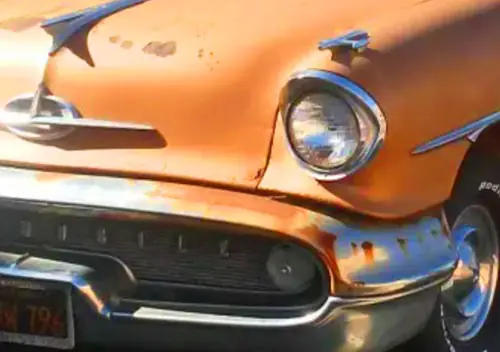
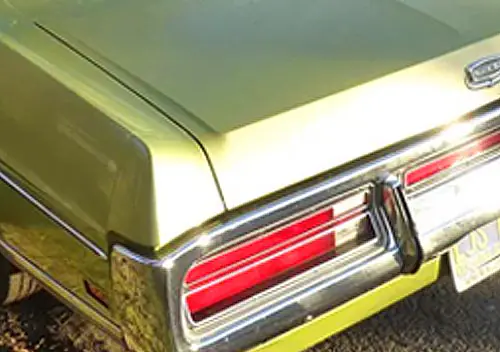
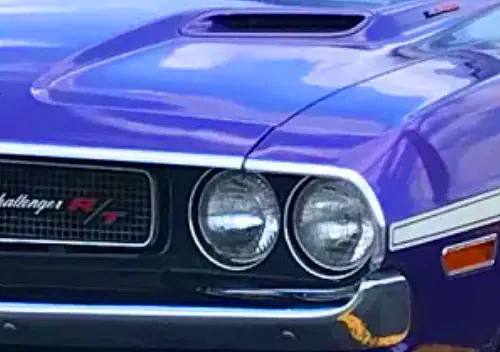

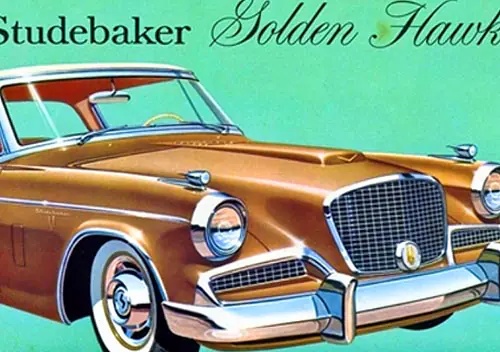
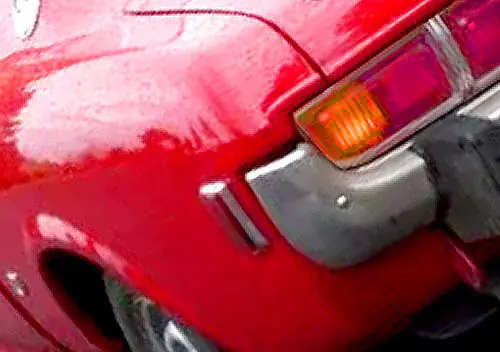
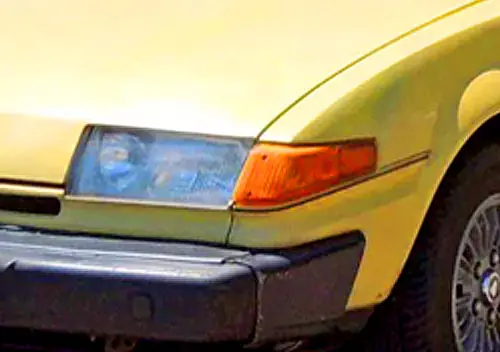
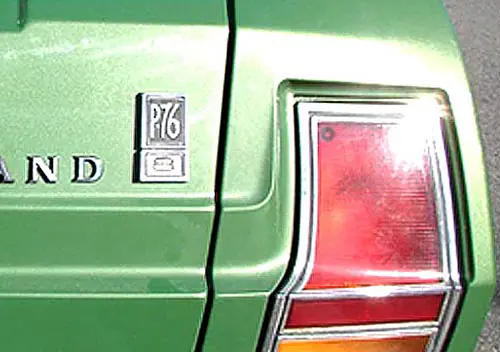
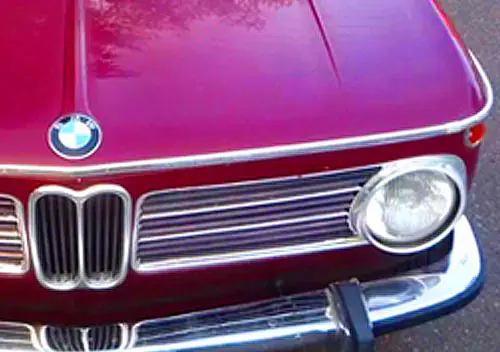
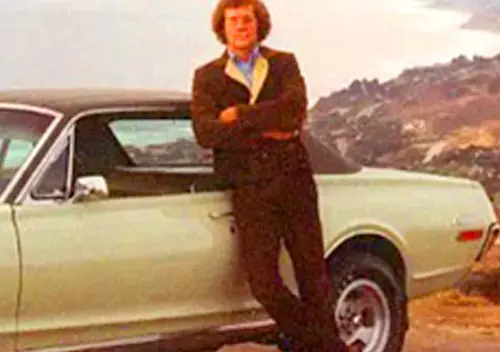
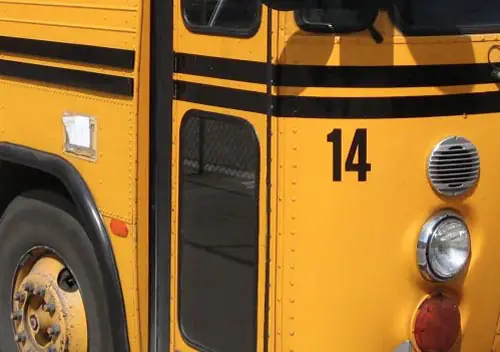
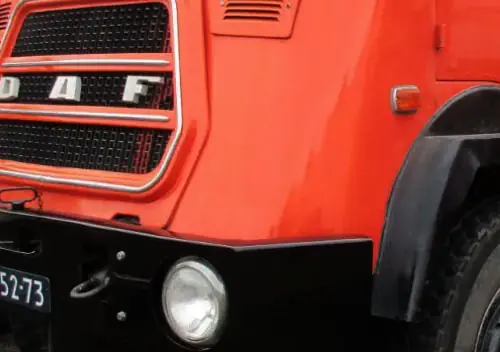
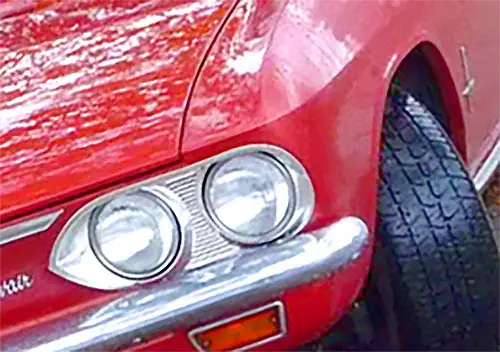
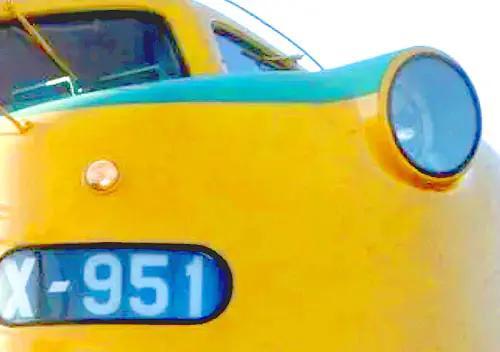
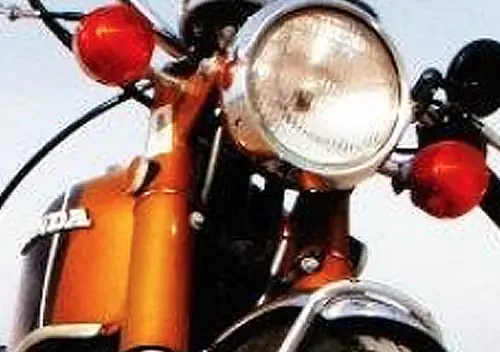
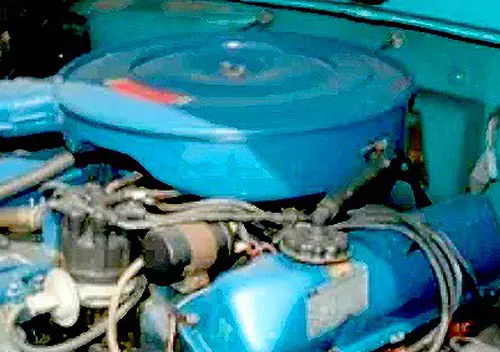
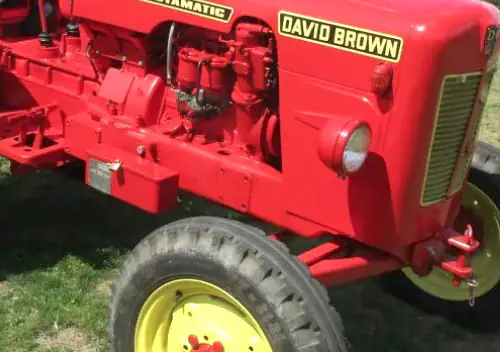
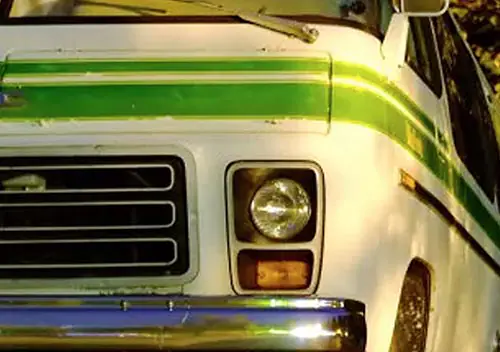

A very impressive and extensive review of what IMO was one of many Cadillac errors. Let me first state that I loved the gargantuan OTT excessive chromed LAND YACHTS built in the so called Malaise Era. Too much was NEVER enough. The 58 Sixty Special was for me the epitome of Cadillac Luxury. That Philosophy still holds true for this 1947 Rolls Canardly ( Roll down one hill and Can ardly get up the next ). The only thing I really like about the 79 revision is the seats, which are remarkably similar to my former 89 Fleetwood Brougham deElegance. Small wonder that after 77 downsized Senior Cadillac downsizing! LINCOLN sold remarkably well. After a disappointing 93 Brougham, I switched to Grand Marquis and TOWN CARS. I’ve been Thinkin Lincoln ever since. My current low mileage 2007 Town Car Signature Limited is the last gasp of traditional American Luxury CARS. Now Cadillac, Lincoln et al are focused on BLOATED SUVS masquerading as Luxury vehicles at BLOATED prices. These Peasant cars are truly REVOLTING. So I’m On to VERSAILLES! As Archie and Edith sang Those WERE the days. And I guess it is true that the can’t teach an OLD dog 🐕 NÈW tricks 😉
Guess the sales refute the idea that it was an error. In fact if Cadillac had hewed more to the impetus that led to this car they may not have become the more-or-less irrelevancy they are today. In fact if they had combined the trend to modern tech with clean and timeless modern design like the proposed car below they could well have really mounted a potent American challenge to German and Japanese luxury cars and reclaimed their lost title as “Standard of the World’. Though I myself like the big malaise-era kitschwagens as sign of a lost time and for what they were, in spite of their excesses, very few others did as time went on, and the sales statistics vividly tell the story.
Thanks for this! Great work on your part and always great to re-read David E. Davis, Jr.’s work.
Sidenote: Interesting that Davis mentions specifically driving it in Michigan in the winter, and all the photography (theirs, not GMs) was done in Southern California, on a car with civilian (as opposed to manufacturer) California plates.
I read C/D from 1967 on—I just can’t recall if there were certain cars tested in winter months where they thought a different locale was better for photography.
This was commonly done at all the magazines as higher grade professional color photos became more common and deemed necessary.
This was a really interesting period in the U.S. personal lux market. Going from memory on production/sales figures, Lincoln spurted to the lead with the Mark IV and cemented it with the Mark V. This car came out in the Mark V’s final year, and I cannot recall which held the sales crown for 1979. But then the 1980 Mark VI came out, and Cadillac never relinquished the lead for the rest of this model’s life.
I knew a couple of people who owned these when they were fairly new to middle aged, and they really liked their Eldos. It is too bad that the 80’s versions got such stink-o engines. I had forgotten that 1979 was the only year to use the Olds 350. I think a 1980 model with the 368 and touring suspension would be my choice.
The 1981 model had the 368 V-8 with the variable-displacement feature. It’s my understanding that the computer controlling this feature could be easily disconnected, in which case the engine operated as a normal V-8, and was thus perfectly fine.
Even the 1980 368s gave up a big chunk of performance relative to the 1979 Oldsmobile gasoline 350s.
The final Mark V outsold the Eldorado, 75,939 to 67,436, although the Eldorado was certainly the better car. There’s a Popular Science luxury cars comparison that appeared at the same time as this C/D review, and they found that the Mark was slower, much noisier, didn’t ride as well, was comparatively cramped inside, and was much more cumbersome to drive.
The Oldsmobile 350 was available for 1980 California cars, still with the Bendix multipoint injection and feedback control. It was down 10 hp from 1979, but it still had 15 hp more than the 368. So, you could theoretically get a 1980 gas 350/touring suspension combination.
This was never my sort of car, but just about anything was a massive improvement over the 1971-78 Eldorado… huge on the outside, cramped inside (well, I rode in the rear of a ’71), and hideously ugly.
That aside, one must consider the times, and it was a surprisingly good effort.
You’ve created a definitive article on the 1979 Eldorado. Great work, and always appreciate your valuable candor.
I was a teen at the time, and was impressed by the refreshed E-Bodies. I especially like the redesign of the Riviera. With their return to sanity in terms of size, weight, and economy. They were again socially acceptable. A solid step in the correct direction for domestic cars. But like the first gen Seville, had marginal impact in their direct competitiveness with luxury imports.
For me, the bustleback Seville tainted the entire Cadillac lineup indefinitely, as old men’s cars. I was disgusted as a young car enthusiast, that GM appeared to take a dramatic turn backwards, with the ’80 Seville. It was not the direction I was anticipating at all, for the next Seville.
The more aggressively packaged blacked-out 1983 Eldorado Touring Edition targeted at enthusiasts, should have been a marketing package ready, upon launch in 1979. Not 1982/’83. Too late, by then. As ineffective as the Cimarron, at capturing the import buyer.
As I’ve said before, many corporations are heavily burdened, and plagued, by followers and ‘yes’ men. Fewer progressive thinkers, willing to stake their careers to innovation. And taking intelligent risks, that would secure the long term success of a company. Careerist who comply with and support, bad decisions. Until they are ready to leave.
Rather than putting their necks out, pursuing the best results, for the corporation and consumers. I think it has been a growing trend in corporate America/UK/Canada for decades. A significant problem with GM, I’d suggest.
As I’ve also suggested before, more deeply negative offset performance wheels would have greatly enhanced the appearance of all the 1979 E-Bodies. Flat-faced wheel covers and faux wire wheels, made these look cheaper, more generic, and like old guy’s cars. Would have imbibed the autos with a large dose of masculinity. Which they badly needed.
There’s really no way for the wheels to have negative offset due to the UPP suspension configuration, FWD in general tends to push the hubs/spindles/brakes out further where the wheels are basically flat, which is basically the norm today.
I know. It is shame, as these would have looked fantastic with deep dish wheels.
Mirada wheels Photoshoped here, for effect.
I’d drive that car all day. Looks great!
Very nice! That really gives it Regal T-type energy
On a side note I think I harbor a major soft spot for the Dodge Mirada in large part because of those wheels!
I agree, with what you have said in the past. The Mirada and Cordoba were responses to the 1977 Thunderbird. Including, their styling. Which I like best with the Mirada.
Those Chrysler road wheels also appeared on the New Yorker and LeBaron Coupe. Also saw them on a LeBaron Town and Country wagon. They always looked great. They added modernity, athleticism, and youthfulness, to the mature cars they appeared on.
The E-Bodies really could have conveyed so much strength visually. Stronger wheels would have made a difference.
“…many corporations are heavily burdened, and plagued,…A significant problem with GM, ”
Couldn’t agree more with all your comments on this topic, Daniel M. Well stated.
Especially in the auto industry, there is an inability to creatively develop new strategies that summon the future.
Thanks Paul. I would suggest it is quite widespread in academia, business, and government, from what I have observed. Not just the auto industry. Careerism, cronyism, conformity, and complicity.
When I look at ’80’s GM, I think self-interests and careers were more important than the corporation’s success, and future achievements.
This has largely been true of essentially any business anywhere at any time, and I can’t think of any good reason an individual employee or executive would behave otherwise (especially since there’s no reason to assume such loyalty would be reciprocated, particularly in a corporation as large as GM or Ford!). The only real counter to it is to alter how people are compensated and incentivized. GM liked to pay senior people in stock and bonuses rather than cash salaries, so there was always an incentive to juice share prices even if it involved essentially burning the house down to do it.
On this I must take the counterpoint, Aaron. Attitudes about work begin to form in adolescence. My father always worked for himself, and I was taught to bring a co-ownership attitude and enterprise view to any job I had, whether the leadership supported it or not. If folks in high corporate positions, or any position, need incentives to make them give their all, they should be fired.
At the car companies the greatest leadership crisis is a reliance on the MBA as proof of one’s competence, as if Johnny could be put in any position and thrive. Ambition is also rewarded, even when it is self-serving.
A creative and inquisitive passion, attention to the world around you, lengthy apprenticeship in your chosen profession, an ability to work with and learn from others, and plain old fashioned humility and perseverance are generally what lead to real progress, in my experience.
I think I may have a comment, that went to the ‘trash’ folder. Sorry for the trouble, if it is there. Thank you!
“…no attempt was made to get it homologated for rallycross competition. Given those parameters, it works fine.”
Considering ‘fine’ is being used subjectively, and also considering Don Sherman’s quote “Take a sharp turn and the tires feel as though they’re melting off the rims”, I’m just going to leave this here and let one decide for themselves the appropriateness of the descriptor ‘fine’ for Eldorado California plate 858 VWD:
Please don’t show this to anyone at Cadillac. Thanks.
These E-Bodies were finally the size they should have been all along: the original concept for the ’66 Toronado was for a mid-sized car.
I had some grudging respect for these when they came out, even living in import-centric West LA at the time. But the Eldo was trying too hard to channel the ’67, and its interior was still too gaudy and out of date in its design and execution.
But I would have quite gladly rocked a Riviera T-Type, in white with tan interior. That would still have gone down ok at that time and place, just like the ’83 Aero TBird and the ’86 Taurus did.
After all these years, I still feel the 1979 to 1985 Eldo still looks so good and seems to have aged very well. And in my opinion, anyone who doesn’t love those totally flat floors, split bench seats and column shift has never truly experienced them. These are cars that you can jump in and drive 800 miles in a day (with two drivers of course) and not feel like you just did that. Back in 1993, my wife at the time and I drove our 1985 Seville from NW Illinois to Seattle (WA) and then down to San Francisco before driving all freeway back to IL. The car had over 100K at that time and although not fast or great at mountain passes, it delivered around 24 MPG average and gave us fantastic comfort. Doing that in most any vehicle today would be brutal due to overly hard seats and cramped quarters due to center consoles.
Having done just that in a modern Mazda 6 (actually 1000 miles in a single day) I agree big time, those hard sporty seats big 19″ wheels and cramped footwells made me start yearning for a plush old Cadillac by the time we hit Omaha. I like something more sport tuned on a day to day basis but this Eldorado would be literally first class travel on a long interstate.
Is this the only substantial FWD car conceived with semi-trailing arm rear suspension? I suspect that GM made it this way because it was the type of IRS used by the German competition, not because it makes much sense when optimum suspension geometry doesn’t have to be compromised by half-shaft angles.
I like these cars for their packaging, their interiors, and the hypothetical potential of combining the 1979 Eldo drivetrain with the later Eldorado Touring chassis and trim pieces. It is a shame that they were burdened by the CAFE compliance engines of the day, and styling that I just can’t wrap my head around. Cadillac styling influenced the world for decades, and then just sort of rolled over and died in the ’70s.
Probably neither, really. The primary design priorities were packaging efficiency and ride quality, which I think is how Cadillac sold the independent rear suspension to the corporation. They wanted to shift the rear axle backward relative to the rear seats so that the suspension wouldn’t impinge on rear seat room, keep it compact and tidy so it wouldn’t cut into trunk space, and still allow enough suspension travel so that the car wouldn’t ride like a ’70s F-body. It was very compact and it did provide a very compliant ride, although the geometry was definitely not ideal from a corning standpoint.
Though I liked the redesigned E-Bodies in general, the wire wheel covers, buttoned seating surfaces, lack of any seat side bolstering, and the tacky dashboard, helped undermine their appeal. Aided by the following year’s, grandpa Seville. I felt I was being quite objective then in writing off Cadillac, having any attraction for younger car enthusiasts like myself. I stopped bothering to read Cadillac and Lincoln car reviews, around this time.
When the 1984 Lincoln Continental Mark VII was introduced, I began following that marque again.
This is exactly what I meant by “false dawn.” The 1979 Eldorado was almost there as a car to restore Cadillac’s credibility with younger buyers — Cadillac could have delineated it into separate enthusiast and trad luxury coupe lines, as Lincoln did with the Mark VII, leaving the padded vinyl roof, wire wheels, and tufted button upholstery for the Biarritz — but there was obviously so much money in the gingerbread that the division missed their shot.
Yes, that’s just how I felt as a teen, at the time. I generally credited GM, for the direction they were now headed, with their downsizing. But they were no farther ahead in the larger picture, by remaining tied to the tired faux luxury image, each division model continued to convey.
By 1979, stylists should have had made front & rear bumpers that could have beem integrated into the main body design better, without looking like hung-on afterthoughts. As well, the plastic wood really screamed “cheap” on these cars. Real wood veneer could have been easily have been used as the majority of the surfaces were all flat panels; especially the dash. Another reason being cheap in appointments, is despite being a pillarless design, the rear windows remained fixed. That car would have made a statement if all four windows could have lowered. When one pays a high dollar for what was supposed to be a ‘luxury’ car, these features should have been incorporated.
They dechromed the dash to black plastic in ’84, which was an improvement, but left all of it on the doors.
The Pontiac GP and GA had real wood around the instruments in ’73 only, but kept it on the doors for another year or two. They may have had problems manufacturing multiple cutouts. I believe they were the only GM cars to have real wood in the 70s and until the late 80s STS and FWD Fleetwood.
Excellent article, Aaron. Thank you!
The ’79 Eldorado reminds me of ’69 Elvis: bling, but tasteful, trim and mature. Had he lived to see it launch, I think he would have approved.
I like the idea of a Touring suspension on this car but the dour trim that came with it and other Touring Cadillacs of the era didn’t belong. The car that Aaron pointed out, a tweener that was neither too bright nor dull, seemed to fit it best. But when it did change cloths, looked better dressed up than down.
The touring suspension was initially available as a standalone “sport handling suspension” package, starting in 1980 — the Touring Coupe submodel wasn’t introduced until 1983 — and I think you could even order it on a Biarritz if you were so inclined. I’d much rather have it without a vinyl roof, though.
The Touring Coupe began in ’82, alas too late for the decent engines. Shared its bucket seats with the Cimarron.
Ahh, you’re right — I was confused by the way it’s described in the 1982 brochure, which wedges it in the back as a “Special Edition” along with the Brougham d’Elegance, rather than with the regular Eldorado and Biarritz.
I don’t know about your other readers, but the first thing I noticed was the fuzzed out couple very much into each other using the Eldo’s door as a backstop. The other fuzzed out couple seemingly approves, though not into each other, at least for the moment. Maybe C&D was giving a subtle hint this isn’t your Grandpa & Grandma’s Cadillac!
Comparing the 67-70 to the 71-78 to me would be like comparing the young and old Elvis. The ’79 hearkened back to the 67-70 crisp styling.
The article and comments were an enjoyable read. Thank you.
In that respect, I would say that the ’79 is like From Elvis in Memphis (apropos of Paul West’s comment about ’69 Elvis) — a sadly brief late-career return to form.
The Bendix EFI on the 350 Olds engine did develop a bit of a reputation but as Aaron stated the issues had been resolved by around 1977. Perhaps the biggest issue with the Bosch based EFI was that it was difficult to diagnose when there were issues, the era of effective on-board diagnostics were still a few years away when the system debuted in 1975. Early on the basic strategy for diagnosing problems was to systematically, based on symptoms, substitute various sensors until the issue was discovered. This was easy for the dealer technicians who had access to new parts to try, but an expensive propostion for independent repair shops. I remember Martin Cadillac in West Los Angeles and Ed’s Airport Service in Santa Monica were good places to get those cars repaired. The throttle-body injected Cadillac 6.0L was a fine engine, though not technically advanced as the earlier Olds-based V-8 the TBI Caddy V-8 was very reliable. After that these Eldo’s went straight into the HT4100 dumpster, unfortunately. The 1981 Eldo was reported to be a wise choice for Vegas casino directors that had run afoul of organized crime due to a heavy bomb-defecting NVH dampening plate attached under the front seats. I can’t say I have even seen that piece of hardware, but it makes for a good story.
My Dad’s last Cadillac was a 1979 Eldorado Diesel. But the worst thing about it was not the engine. He put a water separator on it from the first week. It would become hard starting and run unevenly every 6-8000 miles cured with a new factory fuel filter every time. He always had a spare or two on hand.
No, the worst was how it DID NOT hold up over time. The padded vinyl roof shrank until the raw edge of the fabric showed out from under the crown moulding on the roof. We hid it with aluminum roof flashing. The extra cost Firemist paint flaked off, first on the decklid in a shape and size suspiciously like a man’s hand, and then overall down to the primer. The headliner fell loose in typical GM fashion like that on a cheap Chevrolet. The heavy front end wore out the bushings and the wheels went into severe camber misalignment.
It got $500 in trade toward a used Ford Taurus wagon. But the diesel engine still ran, as strong (such as it was) as ever. His next new car was also a Ford product.
As a trade
You bring up an important issue. The parts and assembly quality of the new Eldorado was atrocious. Consumer Reports tested a 79 Eldorado in a comparison test of diesel cars. This was what they had to say about the quality:
“Our gadget-filled Eldorado plagued us with a total of 30 sample defects. A problem In the fuel-Injection system often kept the diesel from starting after the engine had been shut off an hour or so. A cracked oil-filter mountIng leaked engine oil. Electrical failures put the cruise control out of action and made the automatic climate control and the digital clock go haywire. The engine-start light failed. The alternator belt needed tightening at 3700 miles and Jumped off Its pulleys at 5350 miles. Half of the fasteners holding the engine cooling fan were missing. One wheel was held by three different kinds of nuts. Both front wheel covers fell off-an expensive proposition at $44 apiece. Rain leaked into the trunk. And the body was riddled with flaws. That’s hardly a good showing for the “American Standard for the World.”
I own, perhaps one of the best surviving ‘83 Eldorado Biarritz’s in the world! I know this is quite a claim, but it really is that nice. It has a factory black exterior with a red interior (very much like the example featured in this article). Is equipped with rare options such as dual power reclining front seats and the ‘first year offered’ Delco-BOSE radio. And above all of this my ‘83 Eldorado Biarritz is RIGHT HAND DRIVE.
Any great article. Perhaps the ONLY thing I don’t like about these classic 1979-85 Eldorados is the ‘fixed’ rear quarter window. This rear quarter window looks in every respect like it should roll up and down the show off the car as pillarless hardtop body, but no its ‘fixed’ never to move.
Other than this, these are great cars, and the HT4100 engine used from 1982 is fine, provided its looked after.
I’m a bit confused about the power rating. The text of the CD test states that the fuel injected Olds 350 was rated at 10 horsepower more than the carbureted version. In the Seville, it was 180 HP, but in the Eldorado the test data car shows 170 HP?
The test numbers are pretty good considering the type of vehicle. I’d like to ponder the potential of swapping out the absurd 2.19 gearing for something a bit “shorter”, and that horrible flat pellet type catalytic converter ( the next worst thing next to having a potato stuffed up the exhaust ) with a freer flowing type.
In 1976–1977. For 1978–1979, it was down to 170 hp (in both the Seville and the 1979 Eldorado) due to stricter emissions standards. The carbureted version in the 1979 Toronado and Riviera had 160 hp.
I did not fully take in that 2.19 final drive ratio. Is that some kind of record? It’s totally a 2 speed and overdrive transmission, in function if not in the technical letter of the term.
It might be, although by less than you’d think: Mercedes went down to 2.24 on some of their V-8 cars as part of their “Energiekonzept” fuel-saving program. (This was the era when Mercedes was still insisting that the tiny difference in mechanical efficiency between direct-drive and overdrive top gears was of absolutely vital engineering importance.)
Nonetheless, I was taken aback by it — my first reaction was, “That has to be an error, surely they meant 2.91.” Given how well it performed with the ultra-tall axle, the temptation of substituting the 2.80 gears from the Riviera S Type would be strong.
I believe certain THM-200’s could be had with 2.14 final drive, but don’t quote me!
Car and Driver was also very impressed with the ’78 Coupe de Ville that they tested. They also said that it was head and shoulders above the big Eldo, and even the smaller X body based Seville. As a Cadillac fan I was ecstatic that Cadillac was on the right track with the downsized ’77s.
When the new Eldo debuted in ’79 it kinda blew my mind, finally a modern and sensibly sized car! I would have bought one in a heartbeat if I could have afforded one. When I graduated from college in 1980, I treated myself to a three year old CdV. After I was married in ’83 I seriously considered a used Eldo, but being married, I had to keep my Wife’s opinion in mind, she was not eager to incur a big debt for a Caddy. So we settled on a new ’84 Cougar.
Later in the mid 80’s there were five or six older co workers who bought this series of Eldo, a couple were new, the others were late model used. The models with the Olds and Cadiilac 368 were fine and quite reliable, and their owners were quite satisfied. One of the guys bought a new model with the HT4100. It was a green steel top and it was gorgeous. He kept it for many years without any problems. My other co workers who traded to newer HT4100 cars were not so lucky. That soured them on Caddys and there wasn’t another Caddy in the lot until I got my ’94 Seville. The guy with the green Eldo traded for a new ’86, and he was very happy with that car and kept that for years.
It was then that the older guys started buying big fancy pick ups.
I consider the 79’s to be one of Cadillac’s biggest successes, and they were good until the HT4100 era. I would be sorely tempted by one of these Eldos with a steel top and a proper Cadillac V8, but these are now pretty hard to find.
I have the Coupe de Ville test you mention, and I could run it here if anyone’s interested.
I thought I’d seen it here already, but it isn’t in the index. Maybe someone linked it in the comments? There was also an article where a mag modified a first Seville or downsized CdV–or just talked about how to do so.
Ahh, you’re right: https://www.curbsideclassic.com/vintage-reviews/vintage-review-car-and-driver-tests-the-downsized-1978-cadillac-coupe-de-ville/
The other one you’re thinking of is this: https://www.curbsideclassic.com/vintage-reviews/vintage-review-1976-cadillac-seville-cd-seville-gt-how-to-build-a-mercedes-killer/
Thanks for those links. I still have my copy of the ’78 CdV test. (somewhere) I read that issue, and I was charged up to get my own ’77 CdV a couple of years later. The downsized Caddies could respond to readily available improvements like better shocks, wheels and tires, and sway bars from other GM big cars like the Impala. But they were pretty good stock, though I added some Pirelli tires to mine and it was great.
It’s no surprise that the Seville could be hot rodded so easily, it was essentially a Nova, which was a four door Camaro/Trans Am. Modified Nova sedans were used by the LASO, but they are usually ignored by car buffs, who would rather have an F body. Of course, the Chevy and Pontiac models had a range of engine performance options that weren’t available to the Cadillacs.
It was the change to FWD which spelled an end to all the Caddy shenanigans. Although the early NorthStar cars were pretty impressive, I had a ’94 STS which was quite the rocket for the times. It could also handle pretty well in an FWD kinda way, if you were willing to hang it out there, which I often did. Remember the car chase in Stallone’s Get Carter?
I think the ultimate Caddy rebuild was the CD article that covered the super Seville that had a twin turbo charged Chevy 454 stuffed under it’s hood and widened body, with roll bars and a rear facing air craft driving light hidden behind the remote control folding license plate.
From what I understand the modern CTS and ATS, and even CT6 platforms are quite good road burners in factory tune. There is the Black Wing which is quite amazing, though a CTS would make a nice sensible platform for a bit of modification.